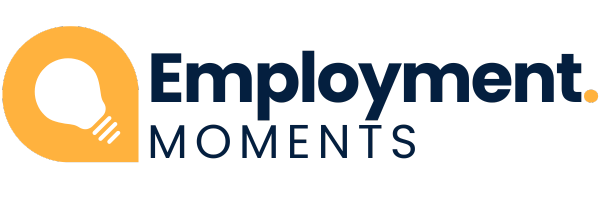In job interviews, body language is key. It can make up more than half of what employers remember about you. Knowing how to use body language is crucial for showing confidence and understanding what interviewers are saying without words.
We’ll look at the important parts of body language. We’ll see how it can help or hurt your chances of getting the job. You’ll get tips to make a strong impression.
The Importance of Body Language in a Job Interview
In job interviews, body language is key. It shows how candidates are seen by employers. Verbal answers show skills, but non-verbal cues make a bigger impact. This part looks at why non-verbal communication matters a lot.
Understanding Non-Verbal Communication
Non-verbal communication is all about signals that aren’t words. It includes facial expressions, how you stand, and eye contact. These signals can show feelings that words can’t. Research shows hiring managers use these signs to judge a candidate’s confidence and fit for the job.
Getting good at non-verbal communication can change how you’re seen in an interview.
The Impact on Employers’ Perceptions
Employers often make their minds up quickly, based on body language. Studies show that non-verbal signs can really affect a hiring manager’s feelings and choices. Standing tall, making eye contact, and using open gestures can make a good impression. But defensive body language might raise doubts about a candidate’s abilities.
Knowing how body language affects employers can help job seekers improve their interview skills.
Key Elements of Confident Body Language
Showing confident body language in a job interview is key. It leaves a lasting impression on potential employers. Your posture and positive gestures are crucial. They make you appear more capable and confident.
Posture: Standing Tall and Engaged
Standing tall shows you’re confident. It makes you feel more confident too. Good posture can make you perform better in the interview.
Employers see strong posture as a sign of readiness. It’s important for your non-verbal communication.
How to Use Positive Gestures
Using positive gestures is also important. Nodding and using your hands to emphasize points can engage the interviewer. These gestures show you’re interested and enthusiastic.
They make you appear more approachable and credible. This reinforces your confident body language.
Body Language in a Job Interview: What to Do
Getting a job often depends on how you act during the interview. The right body language can make a big difference. Making eye contact shows you’re interested and honest. Using open gestures helps you connect with the interviewer.
Establishing Eye Contact in Interviews
Eye contact is key in interviews. It shows you’re confident and trustworthy. Aim to look at the interviewer often, but don’t stare.
This balance keeps the conversation flowing smoothly. It shows you’re fully engaged. When answering, keep eye contact. It shows respect and genuine interest.
Using Open and Inviting Gestures
Open gestures make the interview feel welcoming. Keep your arms uncrossed and use friendly hand movements. Small actions like nodding and leaning forward help connect with the interviewer.
These gestures show you’re open and excited. They make the interviewer feel comfortable and more into the conversation.
Body Language in a Job Interview: What to Avoid
Understanding body language pitfalls is key to making a good impression in job interviews. It’s important to know that some gestures or postures can hurt your chances. Avoiding closed or defensive postures can make you seem more engaged and confident.
Also, watching out for common negative gestures helps keep a professional look throughout the interview. This is crucial for a good impression.
Avoiding Closed or Defensive Postures
Closed or defensive postures, like crossed arms or hunched shoulders, show disengagement or discomfort. These signals can make it seem like you’re not interested in the conversation. Interviewers might see these as signs of insecurity.
It’s vital to show an open and inviting stance instead. This helps create a positive connection with the interviewer. By doing so, you can show your interest and enthusiasm.
Common Negative Gestures to Watch Out For
Negative gestures can really affect how you’re seen in interviews. Fidgeting, tapping fingers, or pacing too much can show nervousness or lack of confidence. These habits can undermine your message.
Being aware of these can help you appear more composed and professional. A calm and steady presence will make a stronger impression on employers. It’s a way to stand out positively.
The Role of Eye Contact in a Job Interview
Eye contact is key in job interviews. It shapes how people see you and builds connections. Knowing when to use eye contact can really help you succeed. It’s important to know the right and wrong ways to use it to show confidence and make a strong case for the job.
Balancing Eye Contact: The Dos and Don’ts
Getting eye contact right in an interview is all about balance. Try to look at the interviewer for 50-70% of the time. This shows you’re confident and interested. But, staring too long can make people uncomfortable.
It’s good to break eye contact every few seconds. You can look away to think or take notes. Following these tips helps create a friendly atmosphere and builds a good connection with the interviewer.
Understanding Cultural Differences in Eye Contact
Eye contact can mean different things in different cultures. In some places, looking someone in the eye shows you’re confident. But in others, it might seem too direct or even rude. Knowing these differences helps you be more sensitive in interviews.
Learning about the company’s culture can give you clues about what they expect. This way, you can avoid any misunderstandings and do well in the interview.
| Context | Eye Contact Norms | Implications for Interviews |
|---|---|---|
| Western Cultures | Direct and sustained eye contact is encouraged. | Signals confidence and attentiveness. |
| East Asian Cultures | Less emphasis on eye contact; may avoid it. | Prolonged gaze could be seen as confrontational. |
| Middle Eastern Cultures | Direct eye contact is common among same-gender interactions. | Mixed responses may occur in cross-gender contexts. |
| Latin American Cultures | Moderate eye contact; personal space is valued. | Balance between engagement and respect for space. |
Mastering Your Interview Posture
Mastering posture is key to acing your interview. Knowing when to sit or stand can show you’re ready and confident. Your posture, whether standing or sitting, sends a message about your attitude and readiness. Here are some tips to improve your interview game.
Sitting vs. Standing: How Posture Changes Perception
Standing up when greeting can show you’re confident and assertive. But, sitting down, you need to keep a good posture to make a good impression. A relaxed yet upright posture makes you more inviting.
Don’t slouch, as it can look like you’re not interested. Instead, keep your back straight and your shoulders relaxed. Make sure your weight is evenly distributed and your feet are flat on the floor.
The Best Seating Positions for Interviews
Choosing the right seat can help you connect better with the interviewer. Leaning forward a bit shows you’re engaged in the conversation. But, crossing your arms can make you look defensive.
It’s important to keep eye contact but not stare. The right posture shows you’re excited about the job.
| Posture Type | Effect | Best Context |
|---|---|---|
| Standing Tall | Conveys confidence and authority | Initial Greeting |
| Sitting Upright | Demonstrates engagement and interest | During the Interview |
| Leaning Forward | Shows active listening and enthusiasm | Discussing Key Topics |
| Slouching | Signals disinterest or lack of confidence | Avoid in All Scenarios |
Practical Tips for Enhancing Body Language
Improving body language is key to making a good impression in job interviews. By using practical tips, you can boost your confidence and non-verbal skills. Mock interviews and self-review are great ways to get better.
Practice Mock Interviews to Improve Confidence
Mock interviews are a great way to get used to the interview setting. Practicing with friends or mentors can help you get feedback on your body language. This helps you become more aware of your non-verbal signals.
Regular practice can make you feel more confident and comfortable during real interviews.
Recording Yourself to Review Body Language
Reviewing your practice sessions is very helpful for improving body language. By recording mock interviews, you can see your gestures, posture, and eye contact. This shows you what you’re doing well and what needs work.
Looking at these recordings helps you change any bad habits. It also helps you build more confident body language for the real interview.
| Tip | Description |
|---|---|
| Mock Interviews | Simulate the interview experience for better familiarity and feedback. |
| Self-Review | Record practice sessions to identify strengths and weaknesses. |
| Positive Gestures | Focus on gestures that convey openness and confidence. |
| Posture Awareness | Maintain a strong and engaged posture throughout the process. |
Final Thoughts on Body Language and Interview Success
Body language is key to acing an interview. People often overlook it, focusing too much on what they say. But, the way you act can speak volumes to employers.
Learning to use eye contact, posture, and gestures right can show your true intentions. These actions not only make a good impression but also help create a positive vibe. So, it’s crucial to work on your body language to boost your chances of getting hired.
By incorporating these body language tips into your prep, you can really stand out. Whether it’s practicing mock interviews or thinking about your body language, these steps will boost your confidence. Remember, how you present yourself is the first step to effective communication. So, make sure every gesture counts.


